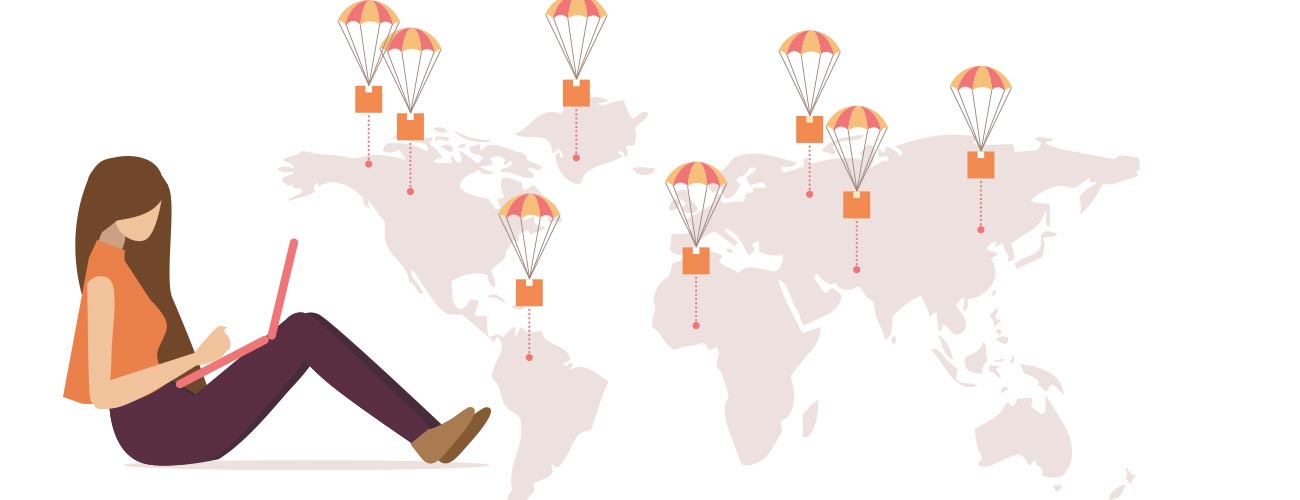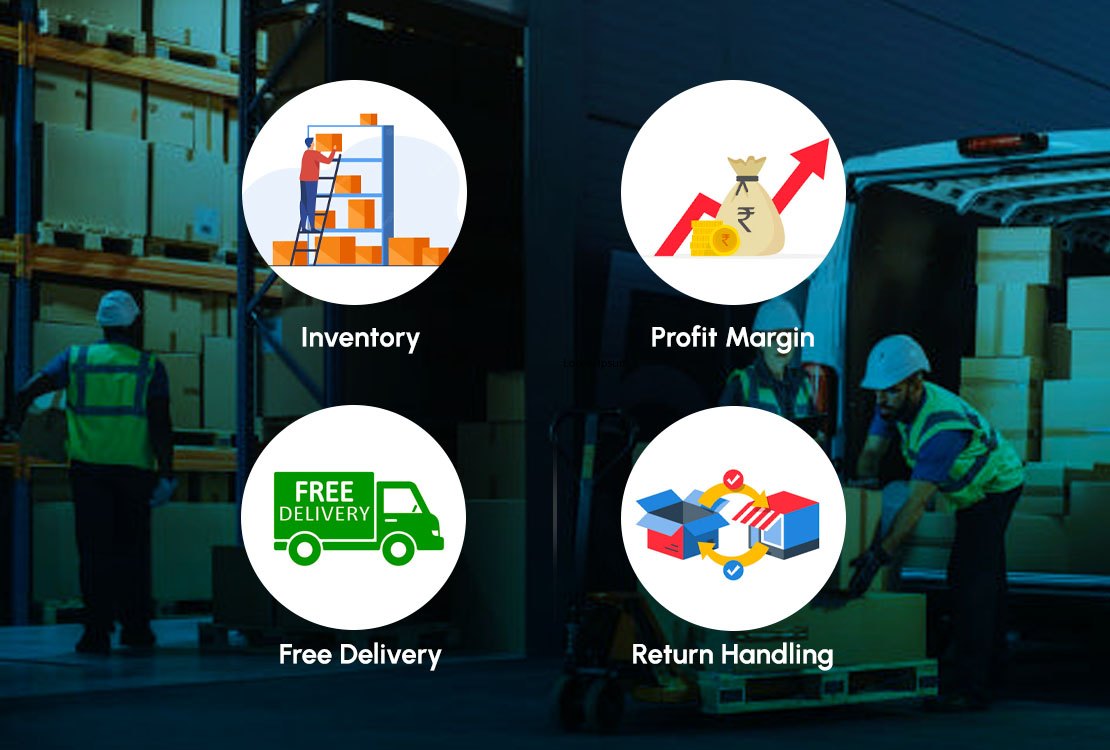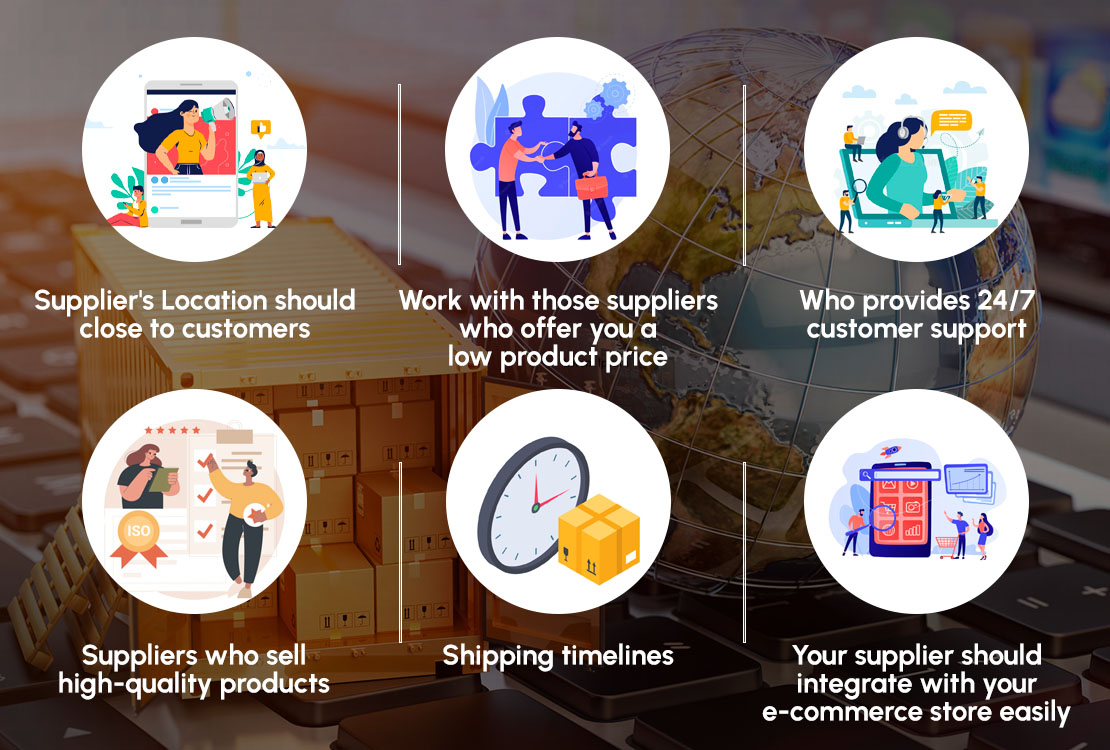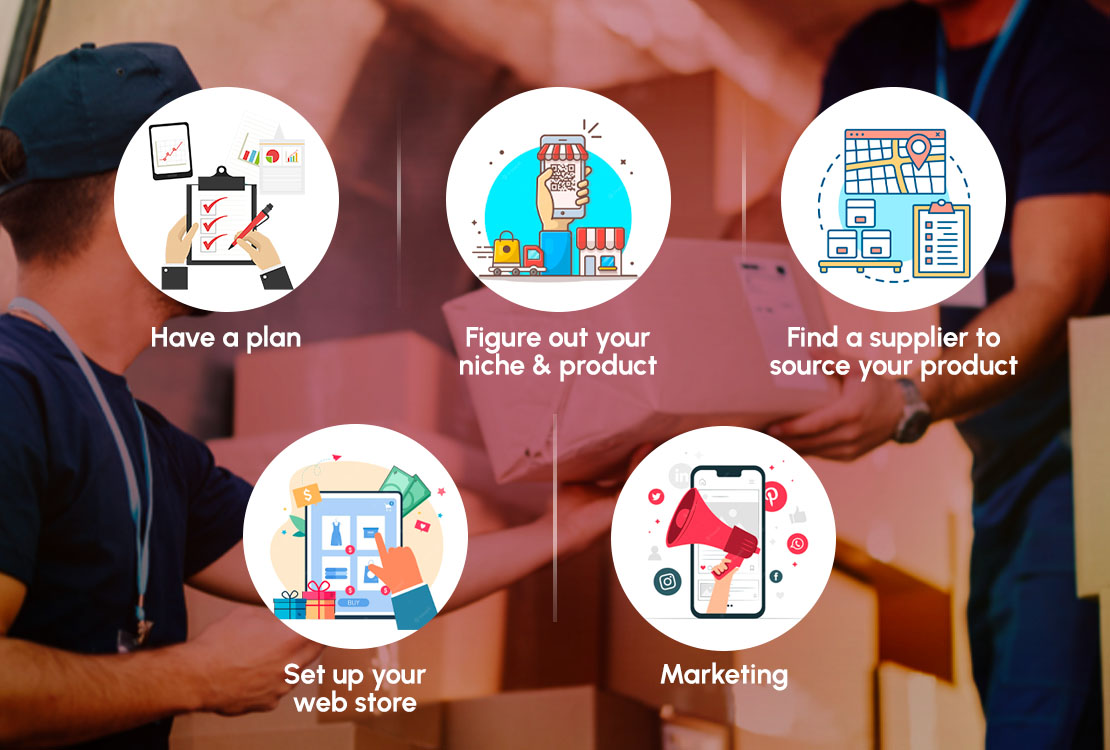The eCommerce industry has taken the world by storm since the last decade. With increased numbers of online shoppers, selling via an eCommerce business model seems like a plan. One such business model widely used is dropshipping. While the process seems to be an easy way to earn money online, it definitely has its own set of drawbacks. Let’s take a look at the pros and cons of dropshipping.
Right Approach to Dropship
Dropshipping is a form of eCommerce business where one doesn’t need to stock or supply in order to sell online. Instead, the dropshipper transfers the order fulfillment and shipping process to the supplier, thus earning a commission for selling the supplier’s product. This process accounts for no investment cost and the ultimate focus of the dropshipper is to market for business growth.
The process has been acknowledged across the globe. So much so, that the market size, back in 2018 was valued at 102.2 billion dollars. This surely proves that it is a globally accepted phenomenon. However, before you step into this business, there are certain bubbles your need to burst. One of which is that, ‘Dropshipping is way more than just easy money’.
At most times, dropshipping as a business alone has seen downfalls. On the other hand, as a complement to an existing business, it has seen a profitable growth. Hence, knowing the pros and cons of dropshipping completely depends on the right market approach taken. Let’s take a look at how it can be done:
Thorough market research


Through market research, understand what’s best for your business. Don’t just focus on the fact of whether the product will sell or no, rather how much will it sell and what will be the profit margins. Additionally, make certain that the supplier for the product chosen has its all-round operations in place. Right from the stock, supply, shipping, and secured delivery.
Supplier’s Shipping Strategy
When you choose a supplier, the first and foremost thing to ensure is that the shipping strategies are intact. Sometimes, the profit margins may be high, and that is due to higher shipping costs incurred on products. Here, although you are secured with a high margin, the supplier’s product will not be demanded due to high costs. Hence, when you choose a supplier, know its shipping solution and guarantee that product has healthy competition, considerate demand and, smooth reverse logistics operations.
Product Marketing


As a dropshipper, your main aim is to understand how you can add value to the product offerings. This can be done through various marketing techniques through your eCommerce website. There are so many techniques to consider, few of which are:
- Email Marketing
- Content Marketing
- Social Media Marketing
- Influencer Marketing
- Google Ads and Retargeting
- Testimonials, Reviews and Customer Stories
- Search Engine Optimization
“We really love marketing and we really hate fulfillment and manufacturing. So dropshipping was the perfect thing. –Yuliya Chernykhovskaya“
Is Dropshipping Beneficial?
Now that the concept of dropshipping and the right approach to implement it is known, the various questions to consider are, “Is dropshipping a profitable business model”? “What are the pros and cons of dropshipping”? “Is it truly worth all the time and effort?”
Let’s take a look at the benefits of dropshipping.
Begin with Zero Investment
Often when you start a business, the first things to consider are the investments, inventory, and a warehouse to stock the products. However, dropshipping as a business is very different. Here, one doesn’t need to invest in storing products, management of inventory, warehouse, logistics, shipping, or development of new products. The only investment you would need is for a dropship store, i.e. your eCommerce website and for marketing strategies. It is good to try and test different ways to market the products to analyse what’s best suited. And for this, a little expense will go a long way.
Earn Before You Sell
The eCommerce business model allows you to actually before you sell. While the concept seems, ‘too good to be true’, it is a fact! When a customer places the order and makes the transaction, you have actually earned your money. You pay the supplier the price of the product and keep your commission. Well! This is why the demand for dropshipping has scaled up, with many existing eCommerce owners choosing it as a business strategy.
Dropshipping Saves You Form Warehouse Costs
Since you have no products to stock or packages to ship, well, you need no warehouse. This also means no overhead costs or capital investment. Along with this, you are also away from any kind of rent, software, insurance, staff, and their salaries, etc. Additionally, you don’t need to keep a constant check on the happenings of the product sales, as you have left the operations bit to the supplier.
Work From Home, is A Real Thing
With dropshipping, you are your own boss. You need not worry about any commands, tasks or deadlines, as you have set them up for yourselves. Your workspace is within the comfort of your beds or sofas with just a personal computer, a desktop, or a laptop in front. In a city like India, traveling is hustle and as a dropshipper, you are free from that too. Furthermore, you can run an international eCommerce business even while wearing those PJ’s! Well! How cool is that?
Everything Is Automated
Through the automated feature in any dropshipping business, mistakes occur rarely. Whether it’s about managing an inventory or setting prices, you are aligned through updated strategies for your business. Through automation tools, you can instantly add unlimited products to the Shopify store along with easy payment gateways. One is exposed to thousands of options with automated comparison tools, to help you choose the best among the rest. All of this helps to enhance efficiency, thus saving time and money. Also, if in case a particular business doesn’t work as smoothly and efficiently in the first go, one can experiment and try something new, again just browse and click!
The Drawbacks Of Dropshipping


Dropshipping is beneficial in many ways. Yes! We have read the above. But as “too good to be true” as the concept may sound, it isn’t the same.
Every business model, like dropshipping has its pros as well as cons. Let’s take a look at some of the drawbacks that this eCommerce business model comes with:
Reduced Returns
Dropshipping, as a business model, calls for absolutely zero investment or capital costs. Additionally, low returns as the supplier handle these costs for a dropshipper. However, when the input is low, the output too can be less. You are actually earning the skimmed income of the converted sales. That is because most of the money earned is given to the supplier.
The commission earned through the sale sometimes does not suffice a lot of your business expenses. These include managing the eCommerce website, marketing, advertising, etc.
As a dropshipper, you may not be lucky to earn 40% and above profit margins from the supplier. Sometimes the margins can be reduced to less than 20% as well. This calls for paying a lonesome from your end, over and above the profits you have earned. At times you will have cut down the selling costs to stay ahead of the competition. This states that you need to reduce the profit margins even lesser.
Competition Is Everywhere
As a new entrant into the industry, competition is the first thing to be aware of. When one dropships a product that is of high demand, it is obvious that there are many other players who are selling the same product. Now, the only thing one can do here is to strategize, one of the ways is reduced costs than the competitive price. Again, a high demand product is mostly preferred by well-known companies who have big names in the market. And who doesn’t want to sell such a product?
Higher competition means reducing the mark-up prices. There are many experienced players in the market who have their sources to reduce the selling price of the product, giving exclusive deals. In this case, your audience is definitely to purchase from a competition than you.
Delayed Responses to Customer Queries
As an intermediary between the supplier and the customer, you are the one who is talking. If it was a traditional business model where you were in charge of everything including the inventory, supply and shipping, it was easier to respond to the customer related queries. However, in the case of a dropshipper, every response is delayed. For obvious reason, coordination does take time.
This calls for customer satisfaction being hampered, as customers do not like to be kept waiting. You are falsely blamed for the uncalled circumstances faced. Ultimately, you are the one losing on your client base and not the supplier.
Low Scope for Business Growth
As a dropshipper, one thing to understand is, your brand will be seen second. First, is the product logo. However, excellent your marketing strategies or sales techniques are, the brand logo is spotted first, the shipping experience next. This means all the credit ultimately goes to the supplier, and very less appreciation at your end.
Also, as a middleman, you need to have a decent and loyal client base for customers to come to you and not visit the brand’s page directly. This makes it difficult to actually build a brand and grow a business as a dropshipper.
Hence, now that we are aware of the pros and cons of dropshipping business, the question is are you actually considering starting one. The eCommerce business model is a complete ball game and it is necessary to know the market first and choose wisely.
As a dropshipper, while you sell at low investment costs, Dash101‘s channel and carrier integration bring a one-stop solution for all your other shipping needs. With this, you are ensured not just shipping rather a business partner deal.






Leave a Review